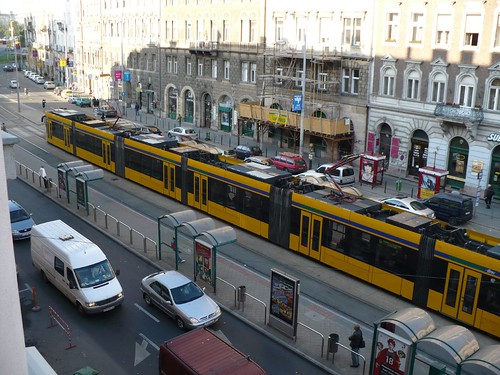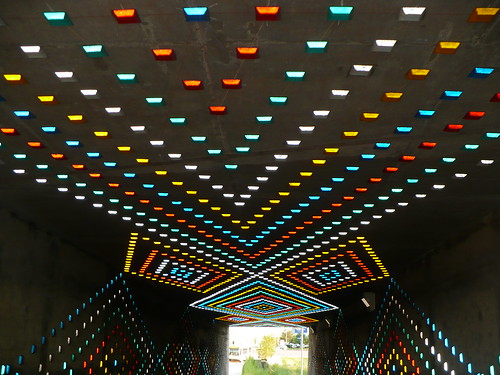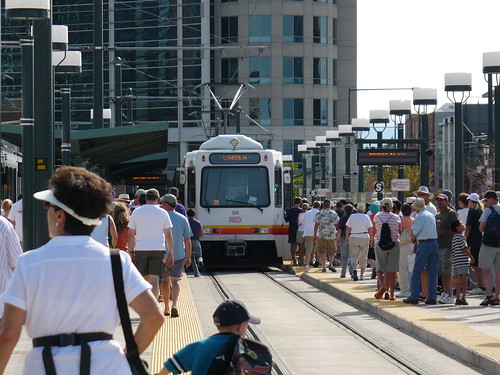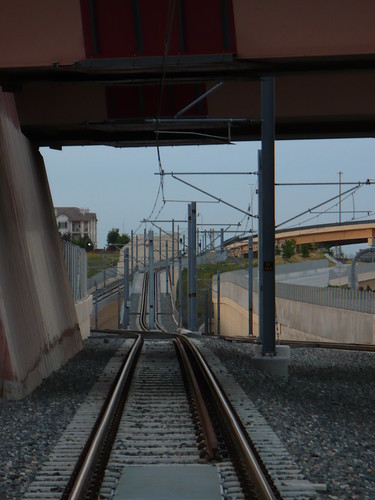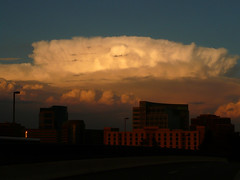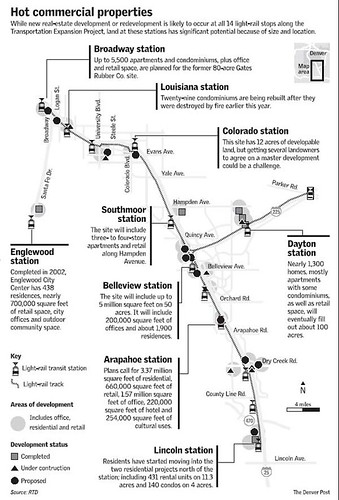There has been a lot of news lately on the federal process in
Kansas City and in
Houston. Kansas City is floundering and their leaders have about 10 different ideas as to what to do. Some say streetcar (please no), others say rapid streetcar or LRT (yes) and others are even calling for
subways (perhaps but not likely). Aside from that, the debate is also about whether to go with federal funding or not. Some argue that it needs to be done with federal funding because then the starter line will get 50% funding (It should be 80% like freeways but that's another post). I'm going to argue that cities today should start on their own. The reason? Time and Politics.
What has time got to do with it? Everything. Because time means political will and citizen backing, time means money and time means solutions. The shorter amount of time that occurs between the start of the idea and operation of the first line, the better off the city is and the more people see tangible results.
Charlotte just opened its first light rail line and used
federal funding to build it. The CATS experience serves as a warning to new transit cities who take the network view on transit expansion. When we look back at it now, it does not seem like such a long time, but the
10 years or so it took to build caused a lot of trouble and roadblocks along the way. Charlotte escaped but others have not been so lucky.
The time it took for this project to be completed led to cost overruns because of inflation and a referendum that almost stopped expansion. The Seattle streetcar (This is just a time comparison, not technology) took from idea to opening only five. The Seattle Streetcar didn't seek federal funding, didn't have to wait for the federal government to approve the process. Phoenix's Light Rail system first showed up in the federal process in
1999 and will be completed next year 2008.
But why is this important? The time it takes to build a line is not and should not be ten years. Whole interurban and street transit networks were built in 10 years at the end of the 19th century. The wait for federal funds in todays highway centric government is not worth the wait in
A. Cost
B. Political Will.
The cost issue rears its ugly head when calculating for inflation. You can't calculate that far ahead of time as to what inflation is going to bring. And you don't start buying materials until later on in the process. Charlotte saw this happen as are other projects, not just rail. And recently the Light Rail to Milwaukie in Portland has a high cost estimate, I'm guessing because the planning is keeping up with the federal timeline (Now 10 years standard). Not that this is a starter line, but its been under planning for so long, its no wonder the cost keeps getting higher.
Another issue is political will. The longer the process is, the less people who were involved at the start are likely to still be involved and 10 years in politics is eons. Charlotte was lucky to have the same Mayor and Transit Chief throughout the whole ordeal. I would say that is one of a few reasons why Austin moved to commuter rail, because they lost pro rail leaders along the way like Kirk Watson who now happens to be back as the head of CAMPO.
But not only do leaders matter, the opposition solidifies behind mistakes and as we saw in Charlotte can led to a referendum or a no vote for more funding. Salt Lake City has been the beneficiary of good news and good moves when it comes to politics. And we saw they will be rewarded with a huge
70 mile expansion and 5 new lines. This is after a starter line and very short extensions that have surpassed ridership expectations by leaps and bounds breeding confidence in the system and creating a mostly (there will always be naysayers) positive political environment.
So the time issue is important. The next issue is the expansion. Generally large cities are trying to build expansive transit networks instead of just one line. So the starter line is really just that, a start. But its an important step again because of the politics aspect. Cities such as Houston and Minneapolis are enjoying pro transit political will because of their great ridership numbers and community benefit. Minneapolis went with federal funding for the first line and is going for it again for the Central Corridor. If they keep up at this rate, they will have a transit network in 50 years with 5 lines. Remember, 50 years is the total amount of time it took to build the national
federal highway system and all they are going to get through the federal process is 5 lines and maybe a city center streetcar?
Houston on the other hand, along with Salt Lake City and Denver will build 5 new lines in the next ten years. Why? Because they got political will from their starter lines and have forged ahead with local and federal funding for expansion. Salt Lake City signed a deal for the FTA to pay for 20% of their expansion after upping their sales tax for new transit while Houston will likely get 50% funding for two lines. Houston was able to build light rail on its corridors because they also got their
rail bias ridership set and networked the corridors in the modeling. This means that any cities first line might be able to qualify for federal funding because its a good candidate, but it will be even better for expansions to other areas of the city which might not have as good of numbers. Cities might also be able to spend a little more money on the starter making sure everything is right instead of letting the feds take out elements that increase ridership like an extra station here and a subway segment there. The rail bias adjustment makes the extensions better able to qualify for federal funding under the cost effectiveness measure.
So if we are playing by the current rules set by the FTA and current funding levels, you can bet that cities will be waiting even longer for transit money. Especially if cities that already have starter lines are starting to ask for money for expansions making the field even more crowded than it is currently. In short, if you want it done fast and you want to build out fast, build it yourself, and come for help on a network later.











